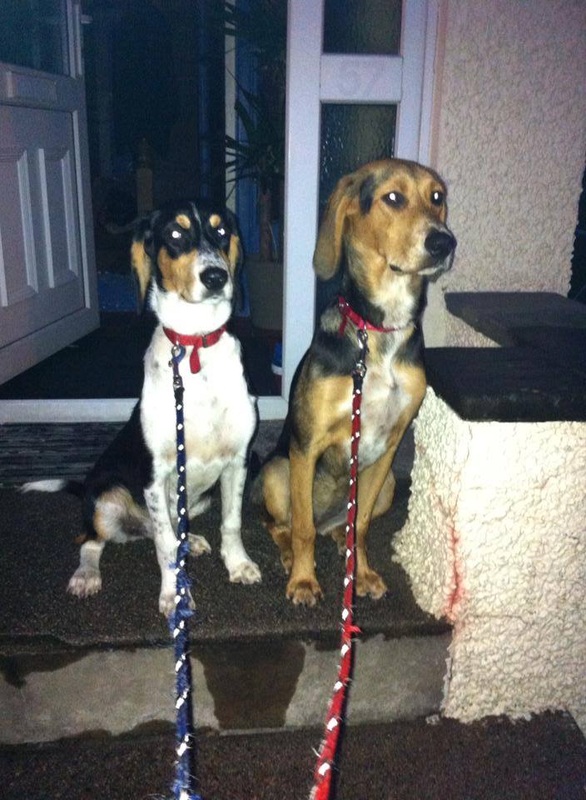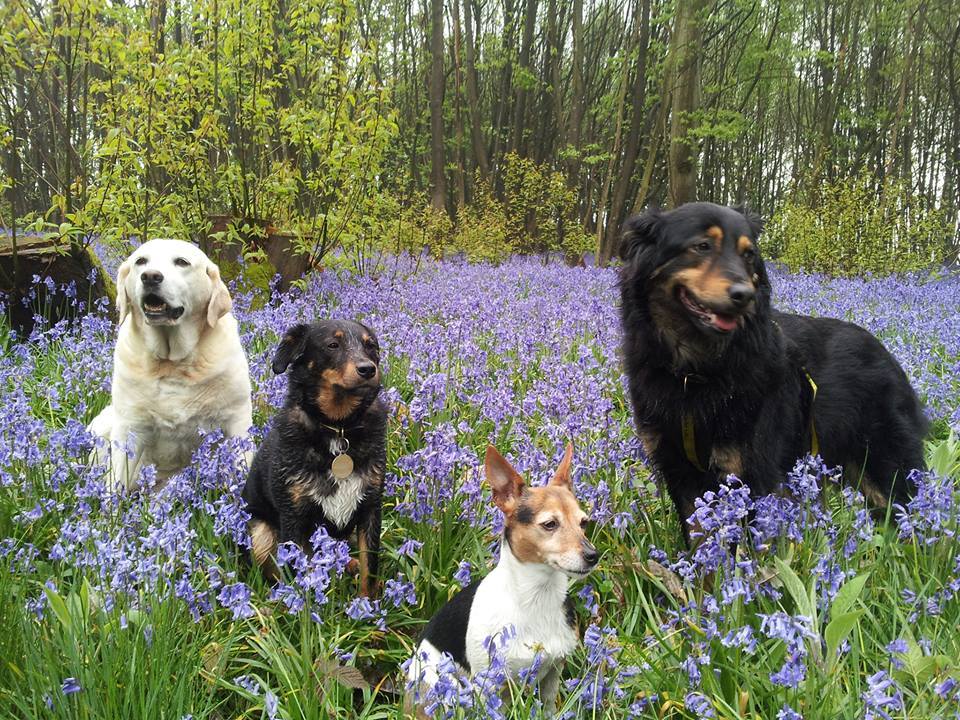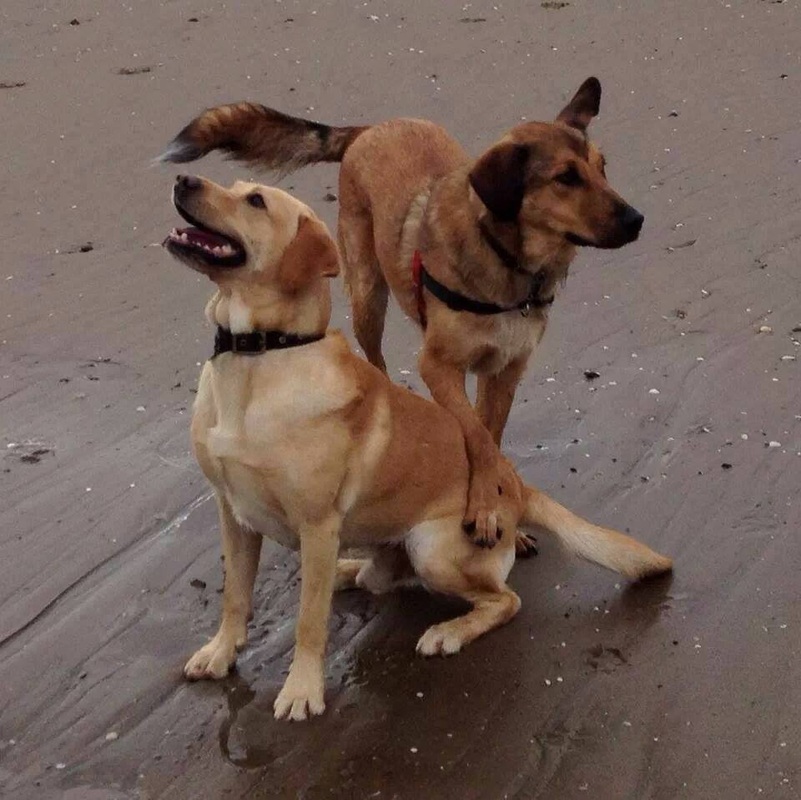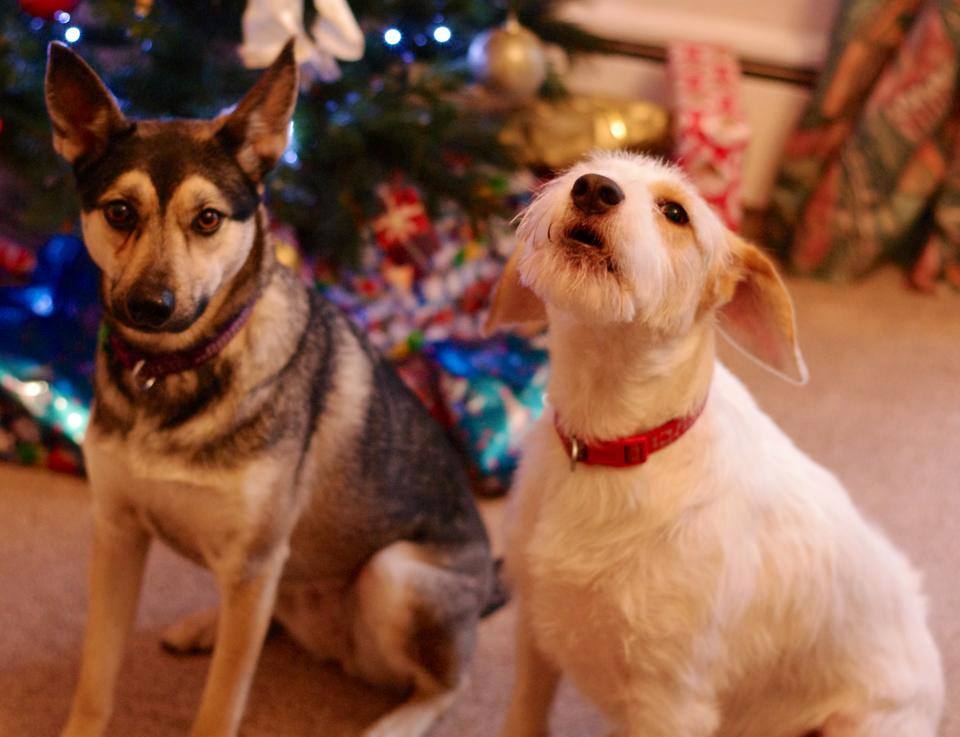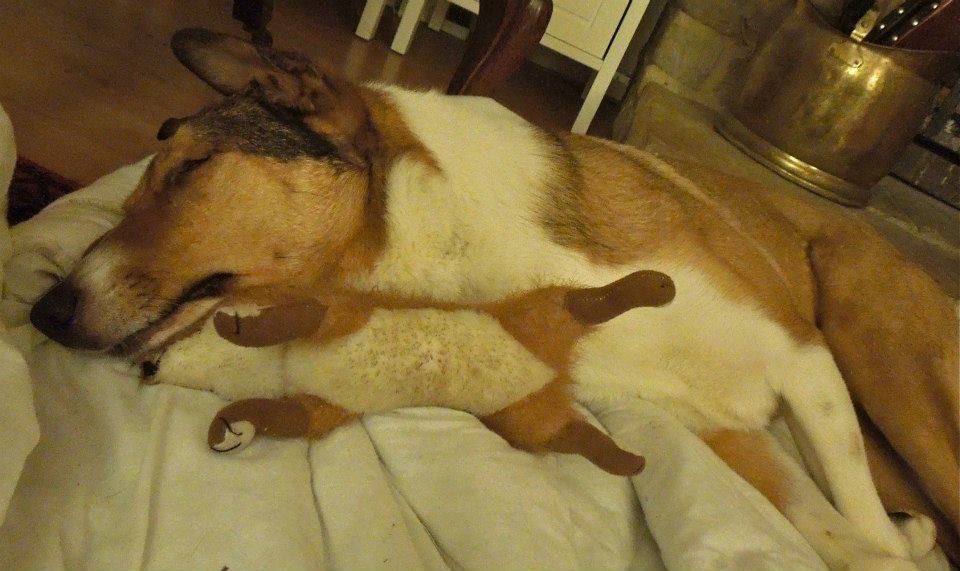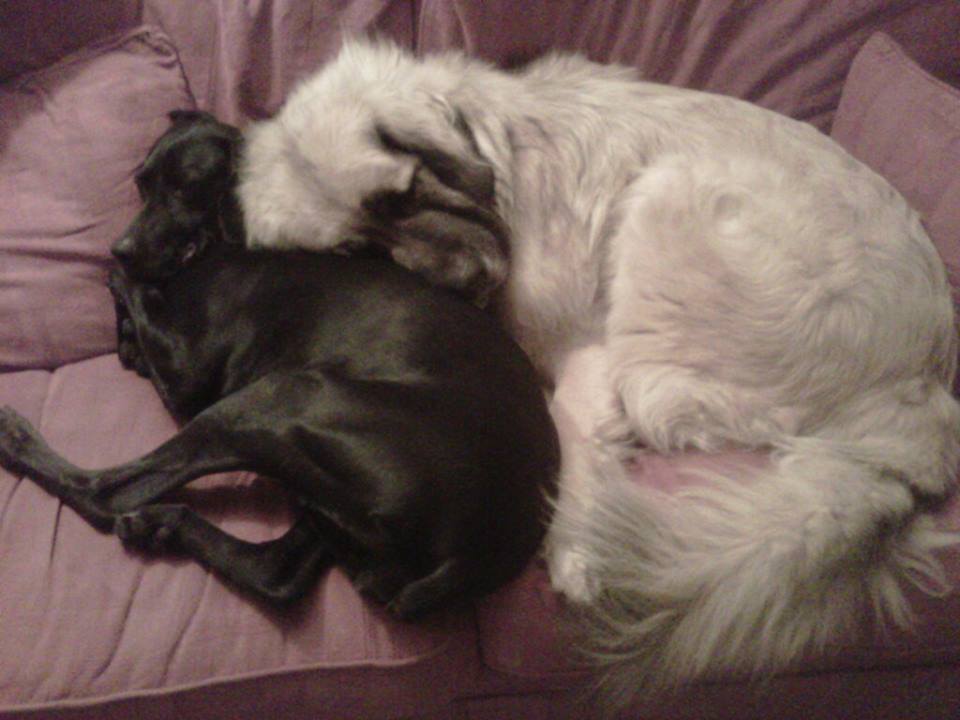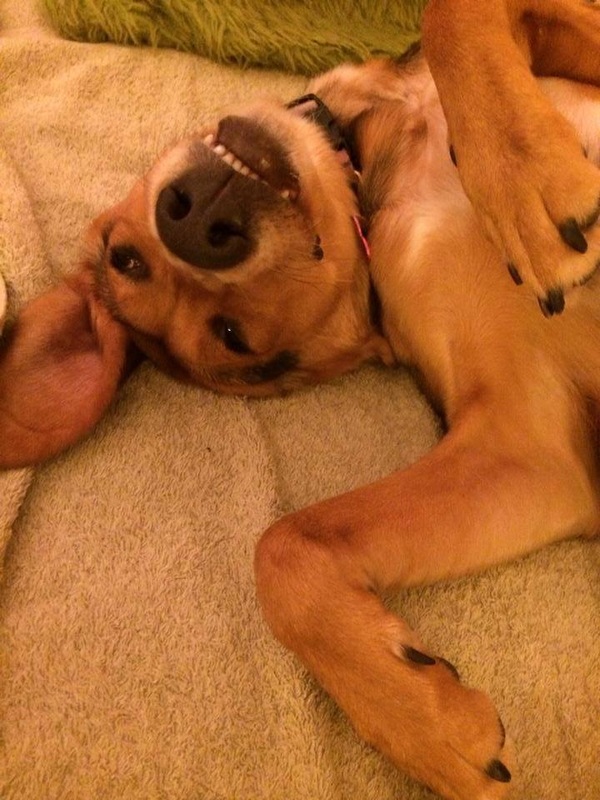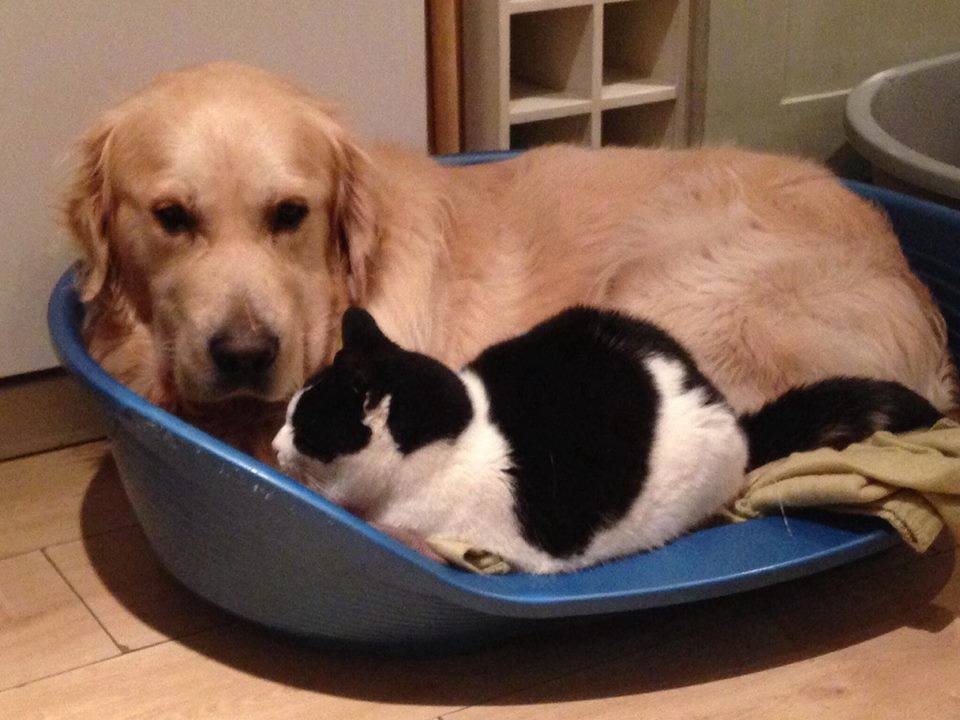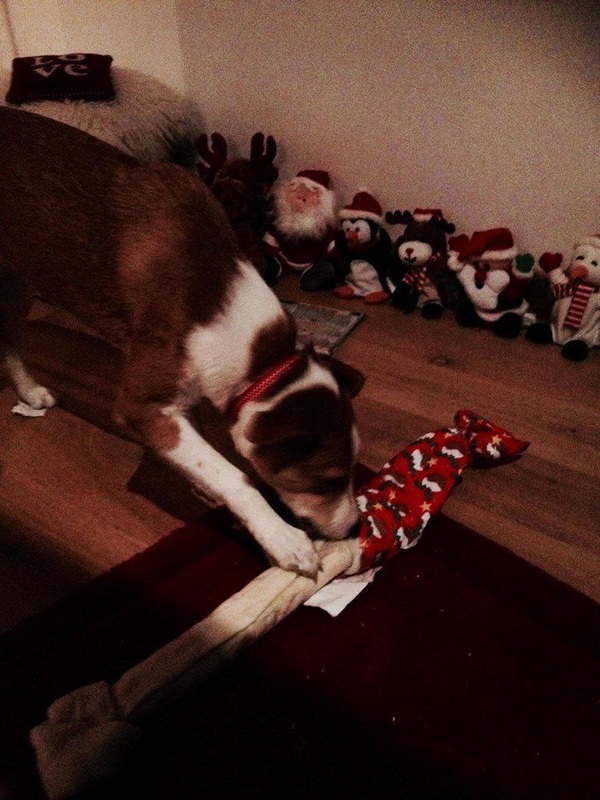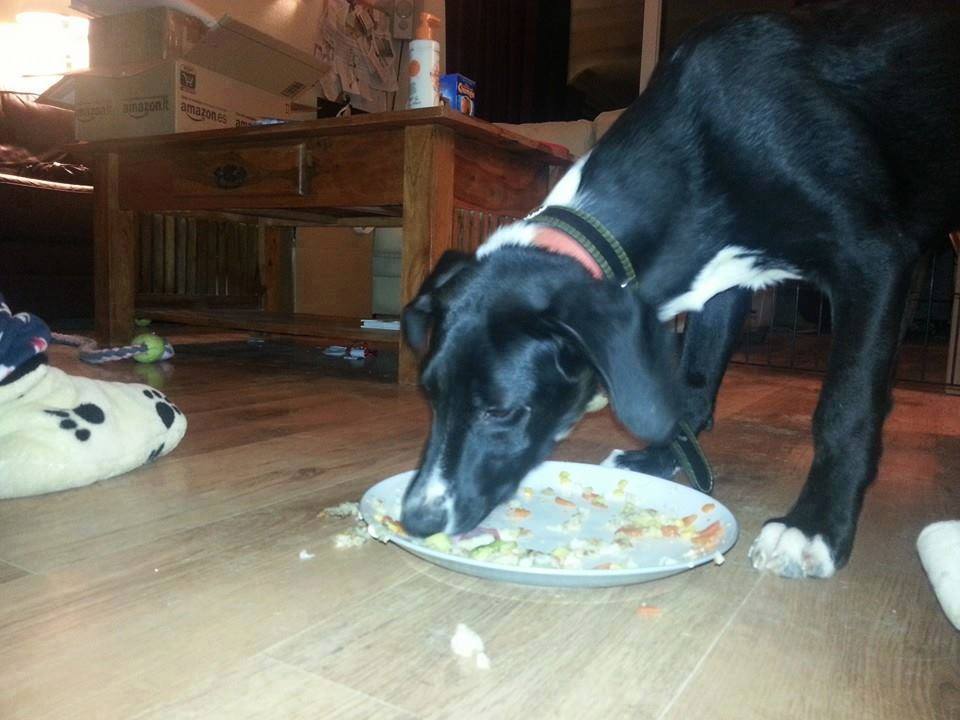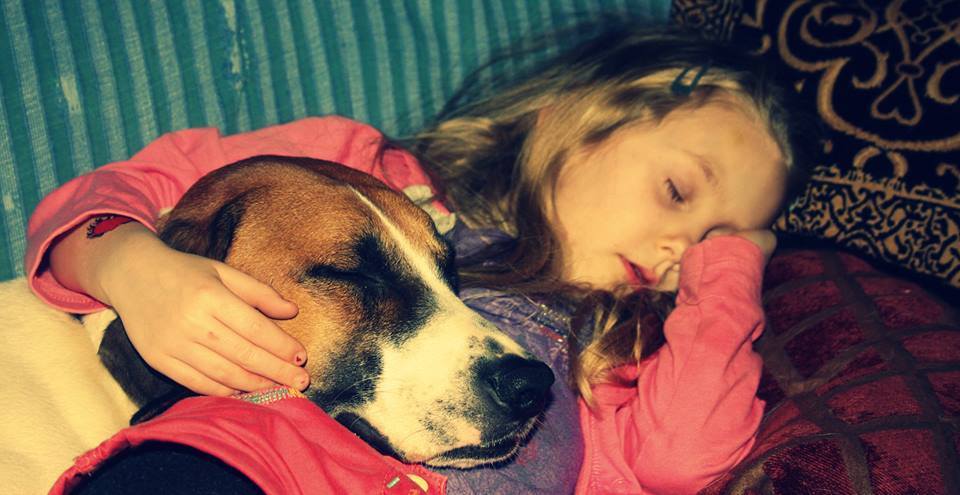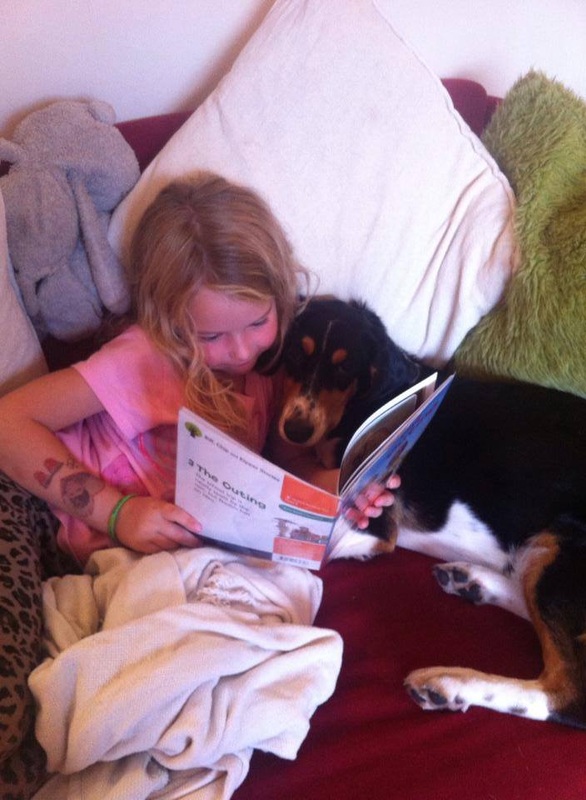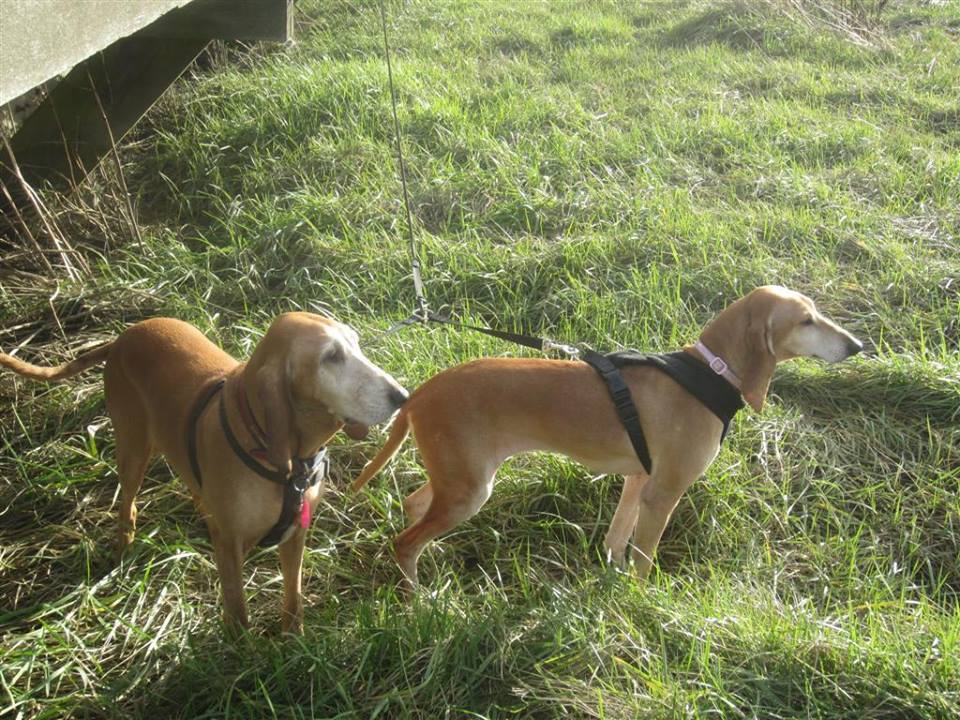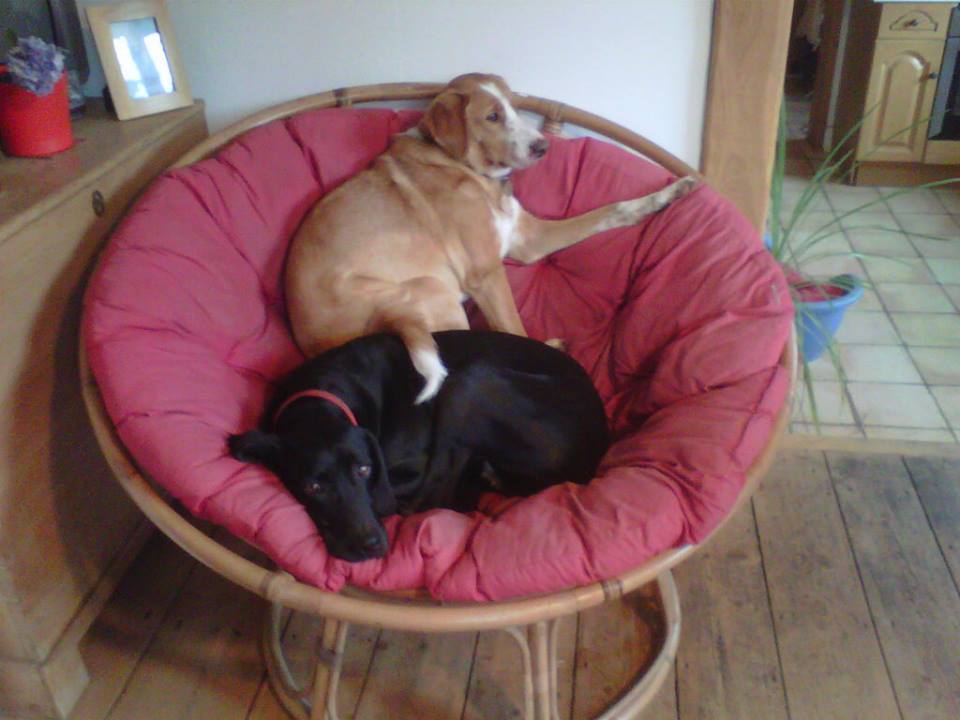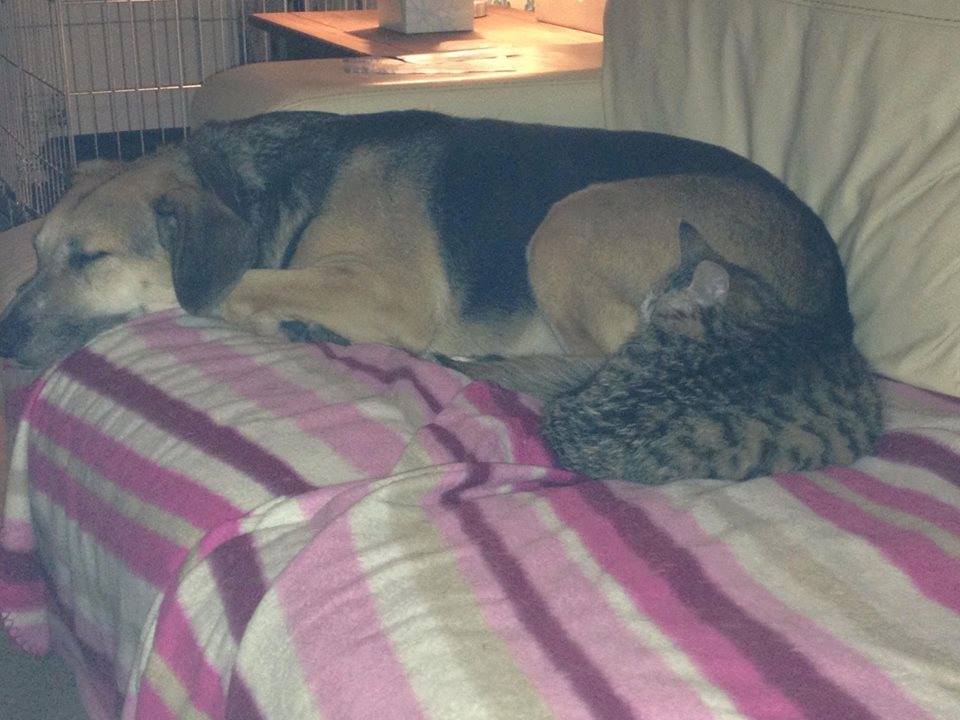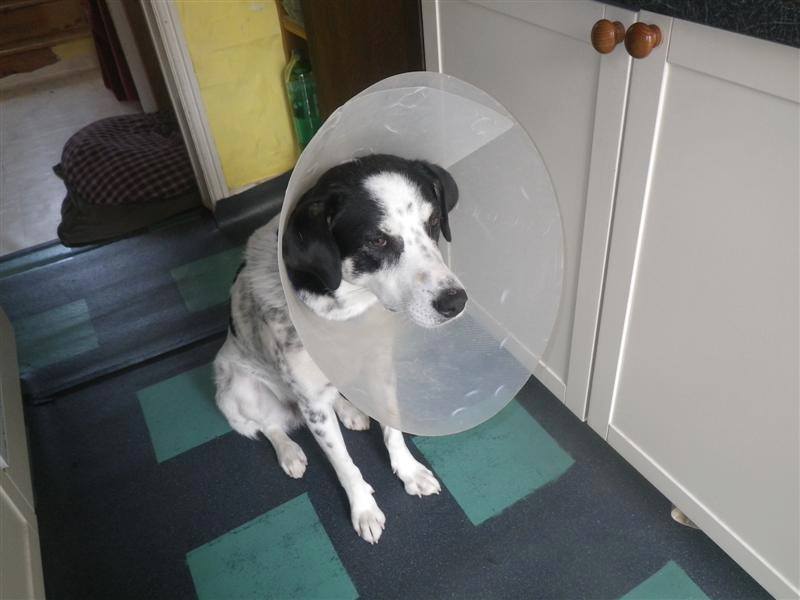The 'In's and Out's' of Adopting an Elpida Dog
Thank you for adopting one of our dogs. Exciting times ahead, and the final hours before your new family member arrives seems to last forever. You have adopted a shelter dog, with a very different background that most pets have. Expect and give your dog a few weeks to settle in to the new environment, it is just as exciting for them as for you! It is natural to feel nervous, will it work, will my dogs get along, how long it will take to settle, what if there are issues. Every dog is different when they arrive in a home; some will settle straight away, some need a few months, or, sometimes, even a good year.
A few things we see more often are lead training, food guarding, and toilet training, establishing pack order, chewing, barking and recall. It is quite common, and will often disappear quickly.
We stay in touch with each and every adopter, giving advice on such matters and provide support where needed.
Below you can find a few useful tips to help you prepare yourself for the first day, and the days to follow.
A few things we see more often are lead training, food guarding, and toilet training, establishing pack order, chewing, barking and recall. It is quite common, and will often disappear quickly.
We stay in touch with each and every adopter, giving advice on such matters and provide support where needed.
Below you can find a few useful tips to help you prepare yourself for the first day, and the days to follow.
|
Here's a list of the things you will need to welcome your new dogs:
The ‘big day’…the day you will meet your ‘Greekie’:
It’s a good idea to bring your dog with you (if you already have one… or two) to collect your Greekie so that they can be introduced to each other on neutral territory. Make the meeting casual and relaxed. Avoid head to head meeting but instead one dog should join the other from behind until they are walking alongside each other, all being well, keep walking while gradually closing the gap. Greek dogs are generally very sociable with other dogs .. Your new dog will be tired after the long journey, possibly a little nervous or scared. They may feel traumatised from the long, unfamiliar journey as they do not know what is happening to them. Let them decompress. Allow them to wander and sniff their new environment. Give them some space to recover from the journey. Let them have a covered bolt hole. Take them in the garden with a double lead. As exciting as it is welcoming a new dog, remain calm and try not to fuss them too much to start with. Give them at least 3 days to sleep off and acclimatise. Whilst you might be excited to show off your new addition, leave this for at least the first week, keeping things very low key. There is no rush. The slower you go, the better it will be for your new dog. Travelling home with your new dog:
Try to bring somebody with you to collect your dog who can sit in the back with them, if you don’t have a secure ‘boot’. Another option is to transport the dog in a transporter cage or use a seatbelt harness. Taking your dog home for the first time:
Many of the Greek dogs have never lived in a house, so everything will be new to them. You will be amazed at how quickly they can adapt to a life of luxury!! Keep in mind though that they may not have seen a TV, a hoover or a washing machine etc, so try and introduce these one at a time. The noise may be scary to them to begin with. The most important thing at this stage is security and calm. As with any new dog, until you have bonded, extra care must be taken with doors, windows, garden gates etc. Think before you open the door or that window! It only takes a second for a dog to slip out. Your garden is secure, but if there is a hole somewhere be sure your dog will find it! For the first few outings into the garden have your dog on a long loose lead or a flexi lead and let them have a good look around. Make sure your dog is wearing a collar with an ID tag on at all times and register your pet to the microchip database. Show the dog where the water bowl is and their bed. Try not to ‘overwhelm’ your dog for the first few days; he/she have had a long and exhausting journey and will probably appreciate some peace and quiet. Keep visitors to a minimum, this is their decompression time from their lengthy and very stressful journey. They need time to understand this new environment that many have never been in before. Keep stimulus low. Most ‘Greekies’ are fast learners and house-training is rarely a problem and if so, not for more than a week or two. Take the dog out into the garden regularly, on waking up, after eating and as with a puppy, praise them when they ‘perform’. If you have adopted a puppy, regular puppy house training is recommended, and may take longer than a few weeks. If you have decided that you are happy for your dog to sleep in your bedroom, you will probably find that he/she will settle very quickly. If you decide you want them dog to sleep downstairs or in the kitchen, it may take a little longer. We would advise that you use a stair-gate to separate your dog from you as opposed to shutting a door on them. This enables them to still be able to hear you and they are much less likely to be distressed. Food:
We always advice as a standard to feed separately and slowly integrate joined meals. At the shelter, food is always available and this is to prevent and fights over it. Going to 2 meals a day will need some getting used to. If you have adopted a puppy, 3 small meals a day is recommended. There is a huge choice of foods available now from both pet stores and supermarkets, or on-line. The best food to buy is additives or colorant free foods. Not all foods suit all dogs so it can be trial and error. Good meat based foods (apart from fresh chicken) include Nature diet, Denes, Natures menu, Forthglades, Butchers tripe. These foods are not generally available in the supermarkets but from your local pet shop or on-line. Many people choose to feed the BARF diet - raw bones and raw foods, including grated carrots, celery etc, A lot of information is available on internet and we encourage you to read as much as you can about it. They say that we (humans) are what we eat. The same goes for our companion animals. Children and dogs:
As with any new dog, don’t leave children alone with them. Teach your children how to approach the dog (depending on the age of the child), i.e. not to run towards, scream or pester the dog. A dog will ‘tell you’ they are afraid or anxious by either growling or nipping - this is not aggression, but simply communication. Always have a ‘quiet’ area for the dog - an area where the dog can go and lie down peacefully in the knowledge that the children will leave him/her alone. Introduction of current and new dog:
The introduction of the dogs is one of the most important parts. This should be done at neutral ground, at a park or such, where your current dog doesn't come much. Both should be on the lead, a good sniff is always good, and then a walk together. This is best done without too much fuss. When at home for the first time, you keep the now dog on lead while walking through the house and garden. Though we tend to want to treat the dogs to settle them somewhat, wait for a few days with giving toys and treats, until the dogs are more used to each other. This is to avoid any indifference between the dogs and who gets what. Let your current dog sleep where it always sleeps, don't let a new dog take over any of his space. Better create a spot where the new dog feels comfortable and can rest when needed. Allow space and don't let one dog back the other into a corner where there is no escape route. A garden is the best place as there is lots of space around. Feed separately. Also there it's advisable to wait before they are let on the sofa or bed. The dogs need to settle their order in the pack; this might cause some growling at first. Nothing to worry about happens to as good as all dogs, and they will settle it themselves. If it happens, you decide where you draw the line. You can let your dog’s sort it themselves the first few times, which sometimes ends up in a fight, but don't tolerate growling over food, toys, space on the sofa etc. A proper introduction will minimize this kind of behaviour. Dogs and the resident cat:
If you have a cat, you will hopefully have adopted a dog that you know is ‘cat friendly’. If, however, you are unsure, then care must be taken. Introducing the dog to the cat in the right way could make the difference between success and failure. When bringing the dog into the house for the first time allow him to smell the areas where the cat has been. Rub your hands into the cat’s coat and allow the dog to smell them and vice versa. Never allow the dog to chase, always have a lead on the dog so that you have control at all times. Spend time calmly with the animals in the same room, with the dog always on a lead while they get used to each other’s presence. Have stair-gate positioned so that the cat can get away if he/she needs to…. with time and perseverance the two can become best friends!! Walks:
One of the best ways to bond with your dog is to walk! Many of these dogs have been kept chained before they were rescued or kept in concrete runs…. some for many years. There is a whole new world out there for them to explore and you will be their guide. However, do not rush this, it is better to wait a few days so they can get used to one environment before being over stimulated or scared by another environment. It will all depend on your dog. During the first 2-3 of weeks and until the dog has bonded with you, you MUST keep the dog on a lead. You will not know how your dog will react in different circumstances, such as meeting other dogs, horses, cyclists etc., so until the recall is established, it is better to be cautious. Better to be safe than sorry, as the saying goes. Flexi leads have their advantages, but they also have disadvantages. We know of a few incidences where the dog suddenly and unexpectedly pulled hard and the person holding the handle lost their grip, which led to the dog bolting in fright as the handle bumped along the ground behind it. If you want to use a flexi consider clipping an ordinary lead around your waist and slipping the handle of the flexi through it so that even if you fall over you are still attached to your dog!! Alternatively you can use a ‘training line’, which is usually around 20-25 feet long and has a clip at one end and a ‘hooped’ handle at the other, so you can put the hand through and hold the lead secure around your wrist. You can then use your free hand to pull it shorter if needed, depending if you are walking in an open field or in the woods. Most rescued Greek dogs bond very quickly and a good recall is easily attained, especially if you have a few ‘reward’ treats in your pocket. The dogs that may take considerably longer to return when they are called are dogs that are either pure-bred Pointers or have a good percentage of a hunting breed in them. These dogs have a natural instinct to follow a scent which can make recall difficult. Some may always have to have a type of long training line attached to them. Most importantly, enjoy your walks! Try visiting different places with your dog, there is nothing quite like the joy of being out in the fresh air watching your dog racing around and loving his new life! Separation anxiety:
Everyone has to leave their dog at home alone at some point. The best way to get your dog used to being left is to build the time up slowly. Once your dog is happily settled, start by going out of the house for just a few minutes at a time. When you come back inside, avoid eye contact and don’t make a fuss of the dog; just walk past him/her as if you had not gone out at all and ‘pretend’ you’re busy.…. even just turning a tap on or opening a drawer…. anything that the dog wouldn’t see as unusual. Your dog will get used to you coming and going; pick up your keys each time you do this. Slowly build up the time that you are gone and you will find that your dog is happy to be left, in the knowledge that you will always return. Additional tips for the more nervous dog:
If you have adopted a nervous dog, the most important thing is to give them time and to be calm and go about your daily routine as you normally do. The dog will learn to accept new noises such as the washing machine being used, or a hover, the TV etc. It can be a most rewarding experience to watch a once nervous and shy dog become more confident and relaxed, as he/she come to understand that nothing is threatening their security. The calmer you are the quicker the dog will accept his/her new surroundings. It goes without saying that extra care must be taken with nervous dogs when opening doors, windows, garden gates etc. Give the dog the time and space to learn to trust you before venturing out into the big wide world. Be patient and let the dog adapt to his/her new life… a life which is completely different to anything they have experienced before. Your patience and understanding will be rewarded many fold. You will see your dog ‘blossom’ like a flower in the sun, your life will be enriched beyond your expectations and you will gain the most loyal and appreciative new friend you could wish to meet, a dog who will greet you with great enthusiasm in the morning and every time you return home, even if you’re gone for just an hour. A dog who will love you unconditionally for as long as he/she lives! Important-Health and vet advice:
All dogs had their blood tested prior departure from Greece. Unless otherwise specified, your dog’s blood test came back negative for diseases such as and including Canine Leishmania, Heartworm and Erlichia. Puppies under the age of 7 months cannot be tested for Canine Leishmania and Heartworm as the results will come back as negative in 99.9% of the cases even if infected. If you are adopting a dog younger than 7 months and would like us to perform a blood test, please let us know at least two weeks before the dog is scheduled to travel. A blood test costs EUR 60 and will be added to the cost of transportation to be paid by the adopter. There is a slight risk that a dog, even though an initial test came back negative, is a carrier of either Canine Leishmania or Heartworm. Therefore, we strongly advice to have your vet perform a blood test and look for Canine Leishmania and Heartworm after approximately 6 months. For more information about Canine Leishmania click here. Important to know
Please bear in mind that all the information about our dogs is based on the environment in which they are now: a shelter with lots of other dogs, erratic human contact, and no contact with children or small animals, such as cats.
There is every possibility that a dog can learn to live with children, cats, and new dogs, but the owner(s) must teach and train the dog to do so. In the case of children, it is a learning process for the child and the dog. Children must be taught that dogs are not toys but another living being that must always be respected. Dogs and children do not naturally understand each other. For example, a child pulls the dog's tail and hurts the dog; the child starts smiling and the dog makes a play bow in response; this scares the child and the child cries. As our dogs spend most of the day with other dogs, they know how to communicate with other dogs better than with humans. If only dogs could talk! But, actually they do, through their body language and a very good book to learn about this is ‘Calming Signals’ but Turid Rugaas. In addition, most of the dogs have been under a lot of stress. Therefore, it is essential that a dog has a quiet place to rest, security, a routine, and consistent treatment from its main handler. Do bear in mind that a dog may not be fully or partially toilet trained. Dogs continue to learn throughout their entire lives – you CAN teach old dogs new tricks! But it is up to humans to be their teachers. Patience, respect, observation, and the ability to put yourself in the dog’s ‘shoes’ are paramount. Take time to understand your dog and if something does go wrong, reflect on what signals you are giving to the dog that may be influencing the dog’s behaviour. Your relationship with your dog is ultimately what you make of it. |
THANK YOU AGAIN FOR ADOPTING ONE OF OUR SPECIAL DOGS. WE WISH YOU MANY HAPPY YEARS TOGETHER!

